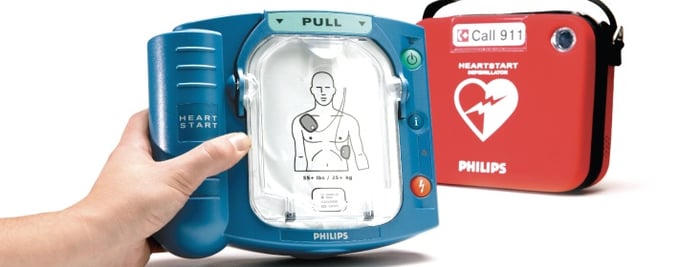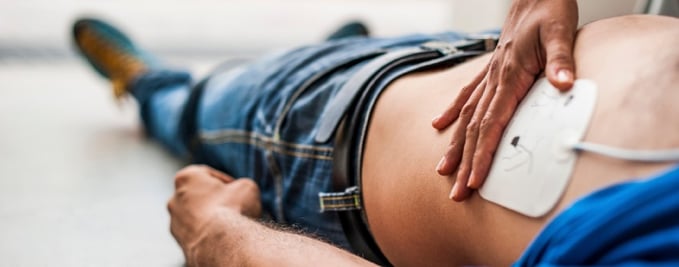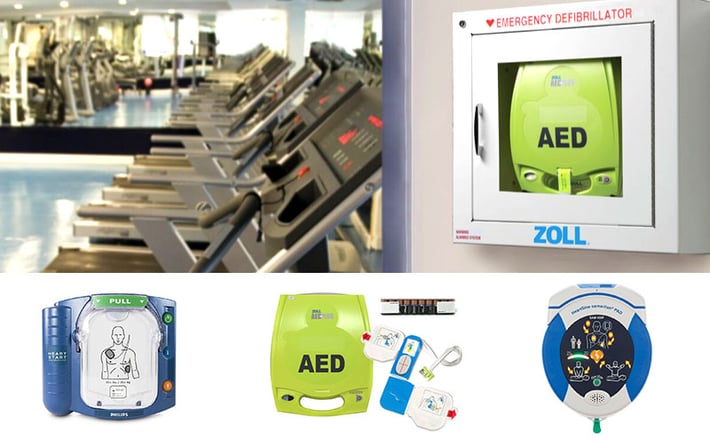When to Replace Your AED Batteries
Most AED batteries last between 2-5 years, depending on the device. You should check on the back of your battery to see the specific date that it will need to be replaced. Research has shown that one in four AED devices fail due to a faulty battery. It is therefore important to have this date in mind so you can have a replacement in advance of the old battery dying.
A battery typically has three types of dates printed on it; a manufacturer date, an install-by date, and an expiration date. The manufacture date is the date when the battery was produced by the manufacturer. The manufacture date is commonly shown because some batteries need to be used within a period of 5-7 years of when they were produced.
The “install by date” typically represents how long a battery can stay on the shelves before it is installed in a device. In other words, the battery should be installed in an AED device no later than the date specified. And finally, the expiration date specifies when the battery will stop operating. One should not install an AED battery after its expiration date has passed.

Keeping your AED Batteries in Good Condition
There are several other ways in which you can properly maintain AED batteries. The first of these includes regularly checking the manufacturer's recommendation for the battery. Ensure that the device always reads “rescue ready” and that the battery is correctly installed. Secondly, pay attention to particular brands because different brands may have different specifications for their devices.
For example, Phillips AED batteries typically have a 4-year standby life and an average 4 years expiration date if installed by the “install by date”. Zoll and Defibtech AED batteries typically have 5-year expiration dates (Defibtech ranges between 4-5 years).

When to Replace Your AED Pads
The AED parts are an important component of the device itself. They are the part that attaches to the victim’s chest and through which the shock from the device will be delivered to the heart. Knowing when to replace your AED pads is an important part of AED maintenance.
AED pads typically have a shelf life of between 18-30 months. This is because they consist of a gel that adheres to the victim’s skin and allows for the transmission of data about the victim’s heart rate to the AED device. Over time, this gel may begin to dry out and lose the necessary contact it needs to transmit accurate information.
The particular lifespan of your AED pads also depends on which particular brand you are using. Phillips pads come with a 2-year shelf life, while Defibtech pads range between 18-30 months. Zoll pads come with the longest shelf life, standing at 5 years.
In addition, once a cardiac arrest occurs and the AED device springs into action, the pads need to be immediately replaced. In the unlikely event that successive cardiac arrests occur, a single pair of pads will not be able to save the victim. Therefore, it is always recommended to carry an extra pair of pads in order to always be ready for any emergency.
AED Cables
AED cables are another important component of your AED device. They allow you to connect to a computer and extract important information recorded by the AED device. Additional cardiac monitoring information can also be collected through the use of ECG monitoring, facilitated by AED cables. ECG allows rescuers to obtain as much information as possible when a cardiac emergency occurs. Your AED cables should be well maintained and properly connected to the device in order to always collect accurate information.
In conclusion, properly maintaining your AED device can be the difference between the unit preventing a sudden cardiac arrest or malfunctioning at the most critical moment. A properly functioning AED must have the right batteries and pads installed and replaced at the correct time. In addition, the right cables need to be used to monitor cardiac information.

How we can help
At Zogics, we provide top-quality AED devices covering Phillips, Zoll, and Defibtech models. Need an AED device or accessories? Check us out today!
Related Content:
Topics from this blog: Product Resources
Back





